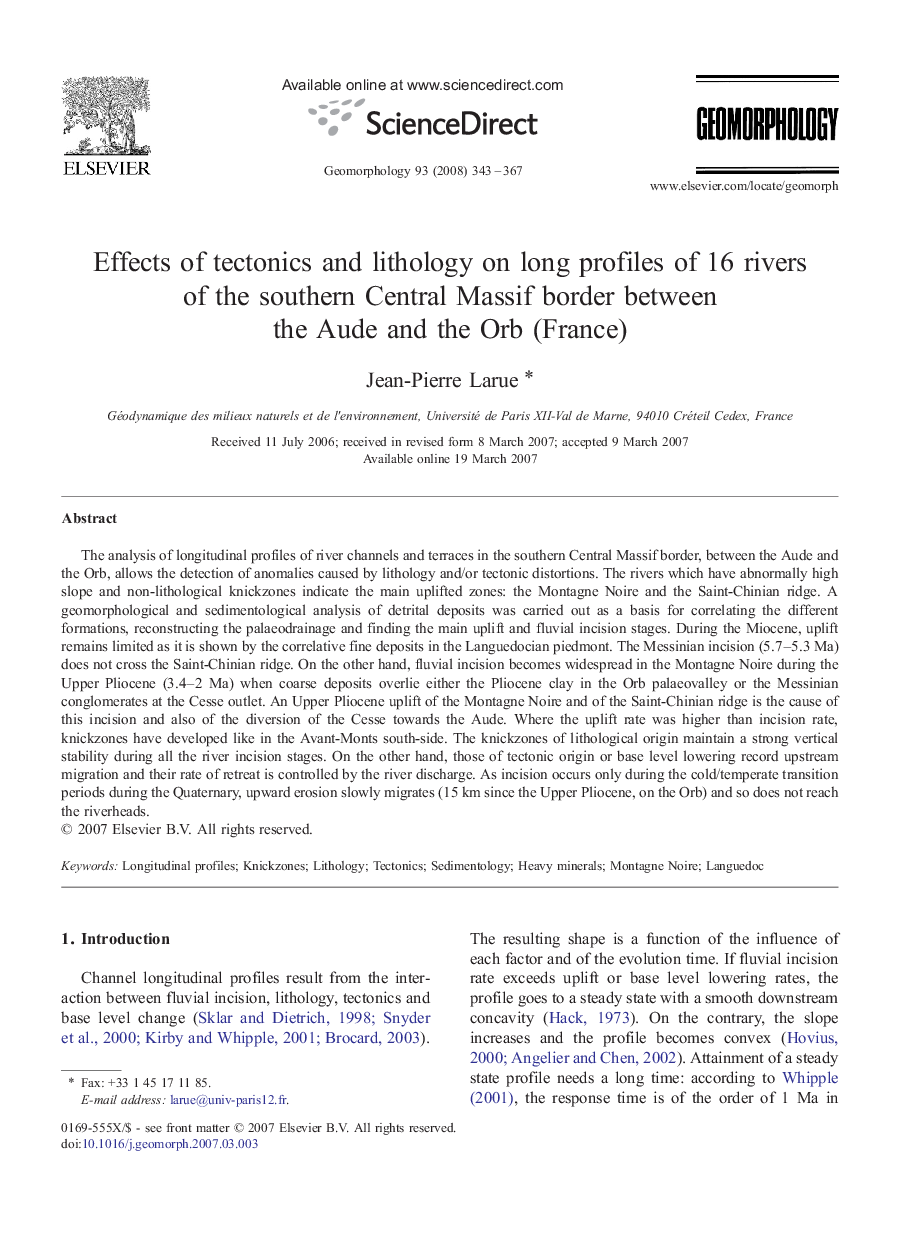| کد مقاله | کد نشریه | سال انتشار | مقاله انگلیسی | نسخه تمام متن |
|---|---|---|---|---|
| 4686900 | 1635566 | 2008 | 25 صفحه PDF | دانلود رایگان |

The analysis of longitudinal profiles of river channels and terraces in the southern Central Massif border, between the Aude and the Orb, allows the detection of anomalies caused by lithology and/or tectonic distortions. The rivers which have abnormally high slope and non-lithological knickzones indicate the main uplifted zones: the Montagne Noire and the Saint-Chinian ridge. A geomorphological and sedimentological analysis of detrital deposits was carried out as a basis for correlating the different formations, reconstructing the palaeodrainage and finding the main uplift and fluvial incision stages. During the Miocene, uplift remains limited as it is shown by the correlative fine deposits in the Languedocian piedmont. The Messinian incision (5.7–5.3 Ma) does not cross the Saint-Chinian ridge. On the other hand, fluvial incision becomes widespread in the Montagne Noire during the Upper Pliocene (3.4–2 Ma) when coarse deposits overlie either the Pliocene clay in the Orb palaeovalley or the Messinian conglomerates at the Cesse outlet. An Upper Pliocene uplift of the Montagne Noire and of the Saint-Chinian ridge is the cause of this incision and also of the diversion of the Cesse towards the Aude. Where the uplift rate was higher than incision rate, knickzones have developed like in the Avant-Monts south-side. The knickzones of lithological origin maintain a strong vertical stability during all the river incision stages. On the other hand, those of tectonic origin or base level lowering record upstream migration and their rate of retreat is controlled by the river discharge. As incision occurs only during the cold/temperate transition periods during the Quaternary, upward erosion slowly migrates (15 km since the Upper Pliocene, on the Orb) and so does not reach the riverheads.
Journal: Geomorphology - Volume 93, Issues 3–4, 15 January 2008, Pages 343–367